Tourism
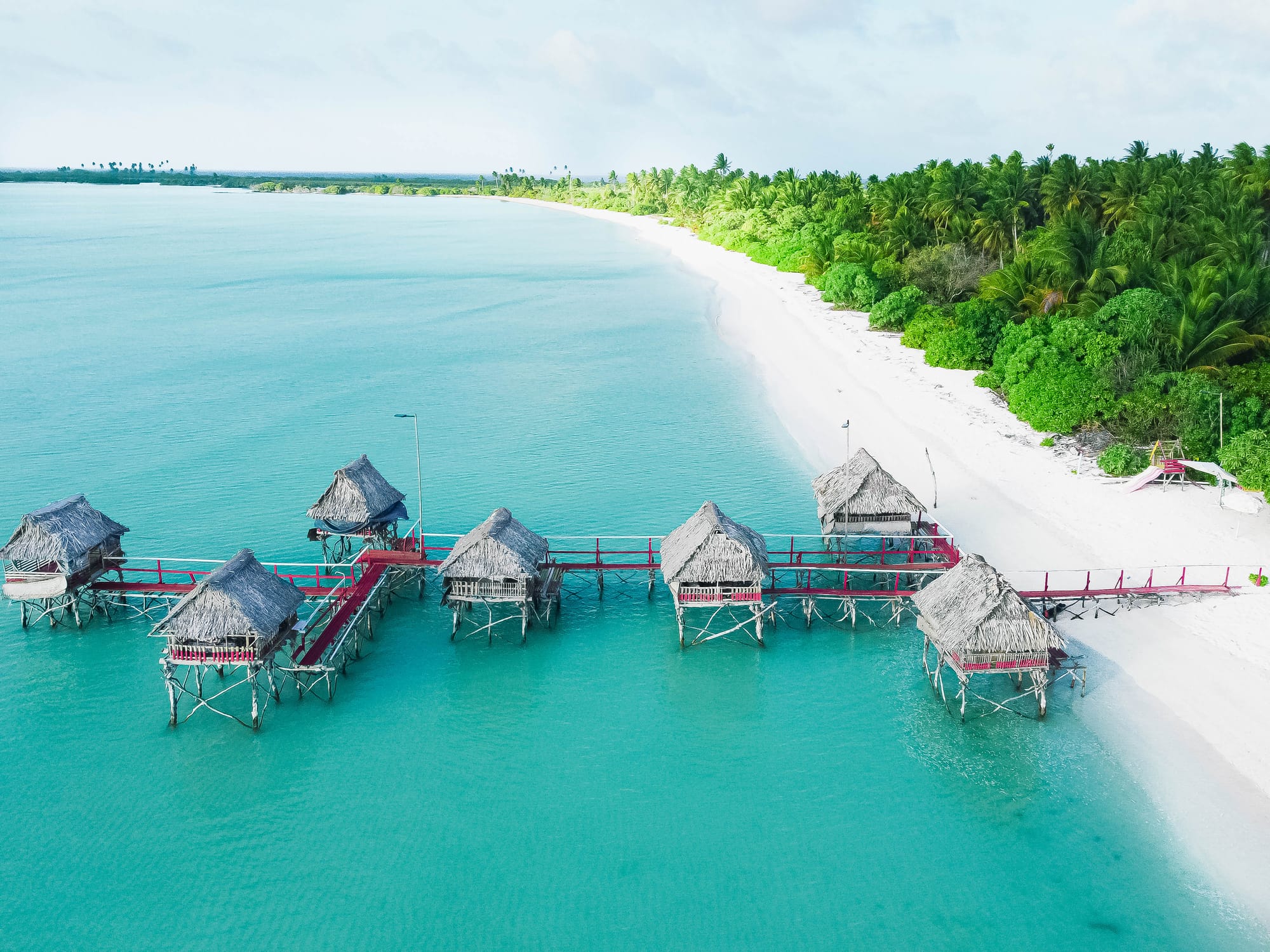
Tourism: A pathway to sustainable growth
- A growing contributor to the economy: Tourism is an important and growing contributor to Kiribati’s economy, currently accounting for around 4% of GDP and providing jobs for more than 2% of the national workforce. Recognized as a key pillar of sustainable development, the sector is prioritized in several national frameworks, including the Kiribati Vision 20 (KV20) and the National Investment Policy Framework 2018–2028.
- Ambitious goals for tourism growth: The Government aims to raise tourism’s contribution to GDP to 15% by 2027 and 20% by 2036 (baseline of 3.6%). Achieving this vision requires strategic investment and partnerships. The Tourism Strategic Plan 2024–2026 highlights investment promotion as a critical enabler of growth, particularly under Pillar 4: Sustainable Tourism Investment Promotion & Facilitation.
- Collaboration for impact: To support this agenda, the Tourism Authority works closely with the Investment Promotion Division to identify, profile, and promote high-potential investment opportunities across the tourism value chain.
Investment opportunities
- Accommodation development: Investment in luxury eco-resorts, mid-range hotels, budget guesthouses, and boutique lodges.
- Hospitality & leisure facilities: Development of wellness retreats, entertainment venues, high-quality restaurants, bars, and retail centers catering to tourists.
- Tour operators & services: Expansion of diving centers, cultural tourism experiences, boat excursion and sport fishing services, and guided historical site tours.
- Infrastructure & transport: Enhance airport facilities and regional airline connectivity, expand inter-island transport networks, develop cruise terminals and jetties, and promote motorcycle and bike rental services.
- Tourism training & skills development: Establishment of tourism vocational training centers to enhance service quality and hospitality skills.
- Tourism-related sites and facilities: Visitor centers, hiking trails, wildlife viewing platforms and forest canopies. Revitalization of historical & cultural tourism sites (museums, landmarks, war memorials, and cultural villages).
Tourism products
As one of the world’s most remote and least visited destinations, Kiribati offers a unique and exclusive experience for high-value travelers seeking authentic and untouched environments. The country is home to the Phoenix Islands Protected Area (PIPA), the world’s largest marine protected area, providing a pristine backdrop for nature and adventure enthusiasts.
Kiribati’s tourism sector is shaped by the Tourism Act 2018, the Tourism Strategic Plan, and the Kiribati Tourism Portal, which promote the development of the following core tourism products:
- Nature-based / Scenic tourism: Marine wildlife observation*, island tours, bird watching.
- Recreational tourism: Scooba diving, snorkeling, surfing, sport fishing, and hiking.
- Cultural tourism: Traditional lifestyle experiences, handicrafts, performances, and local cuisine.
- Historical tourism: World War II heritage sites, war memorials, and historic landmarks.
* Large and diverse number of marine species in Line Islands and Kiritimati Island including bone fish, giant trevally, sailfish, wahoo, barracuda, sharks, tuna and bill fish.
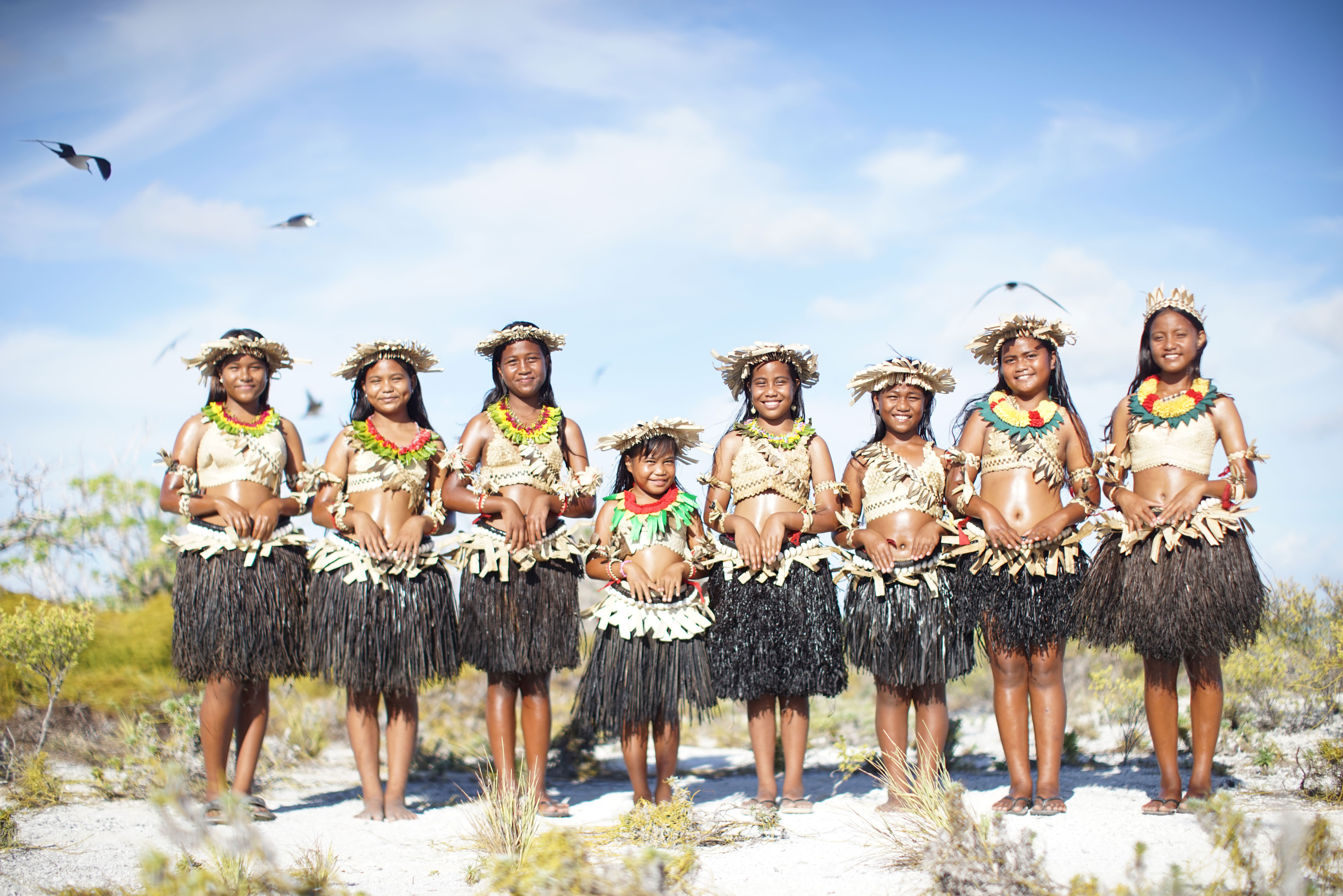
Tourism Industry
- Young and emerging market: Kiribati is one of the smallest tourism markets in the Pacific, welcoming nearly 8,000 international travelers in 2023, just 0.5% of total regional arrivals. Despite its size, Kiribati recorded an average annual tourism growth rate of 3.1% over the past 5 years.
- Strong post-pandemic recovery: Kiribati achieved a remarkable 116% recovery in 2023 compared to pre-pandemic levels (2019), outperforming the global (89%), Asia & Pacific (65.9%), and Pacific Small Island States (63.4%) recovery rates.
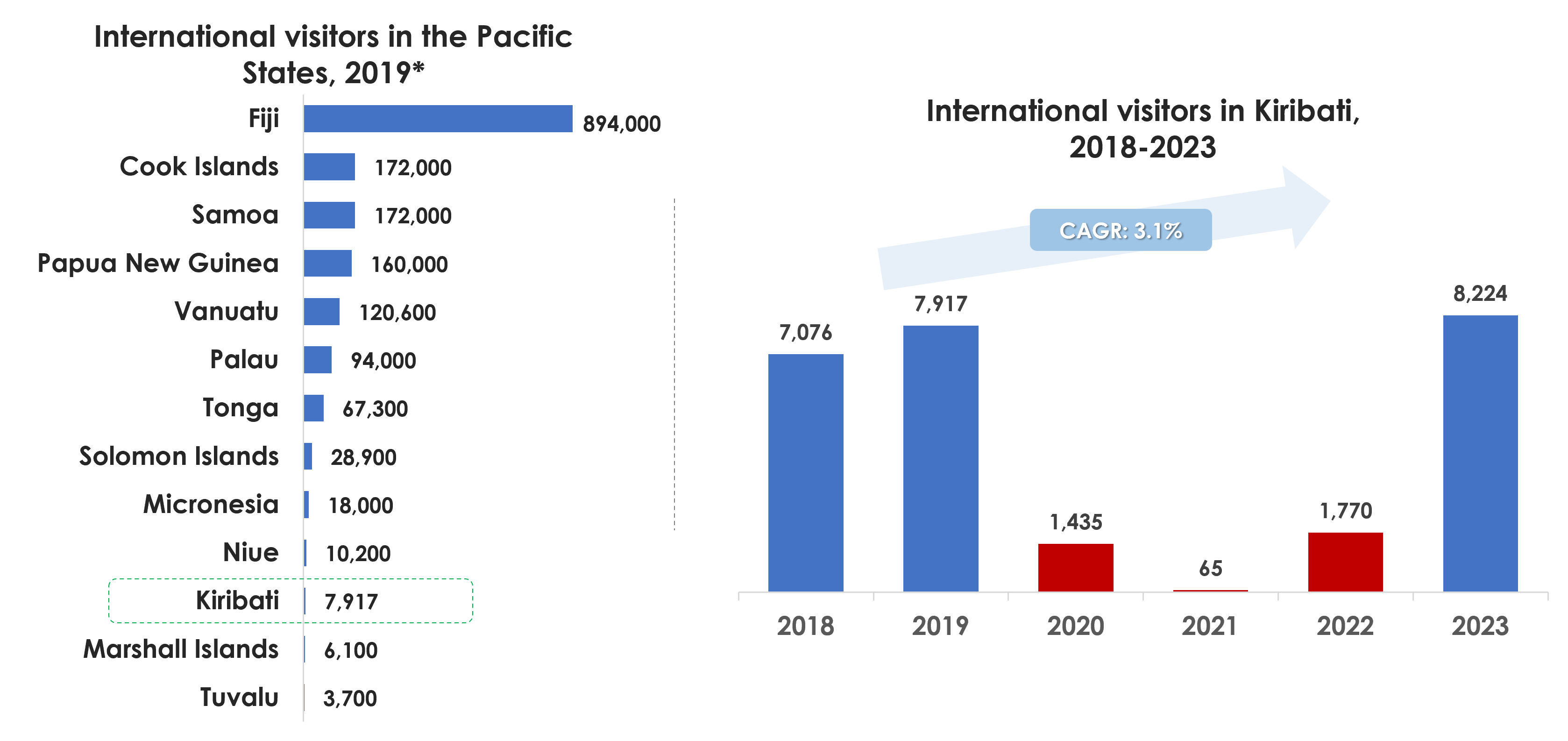
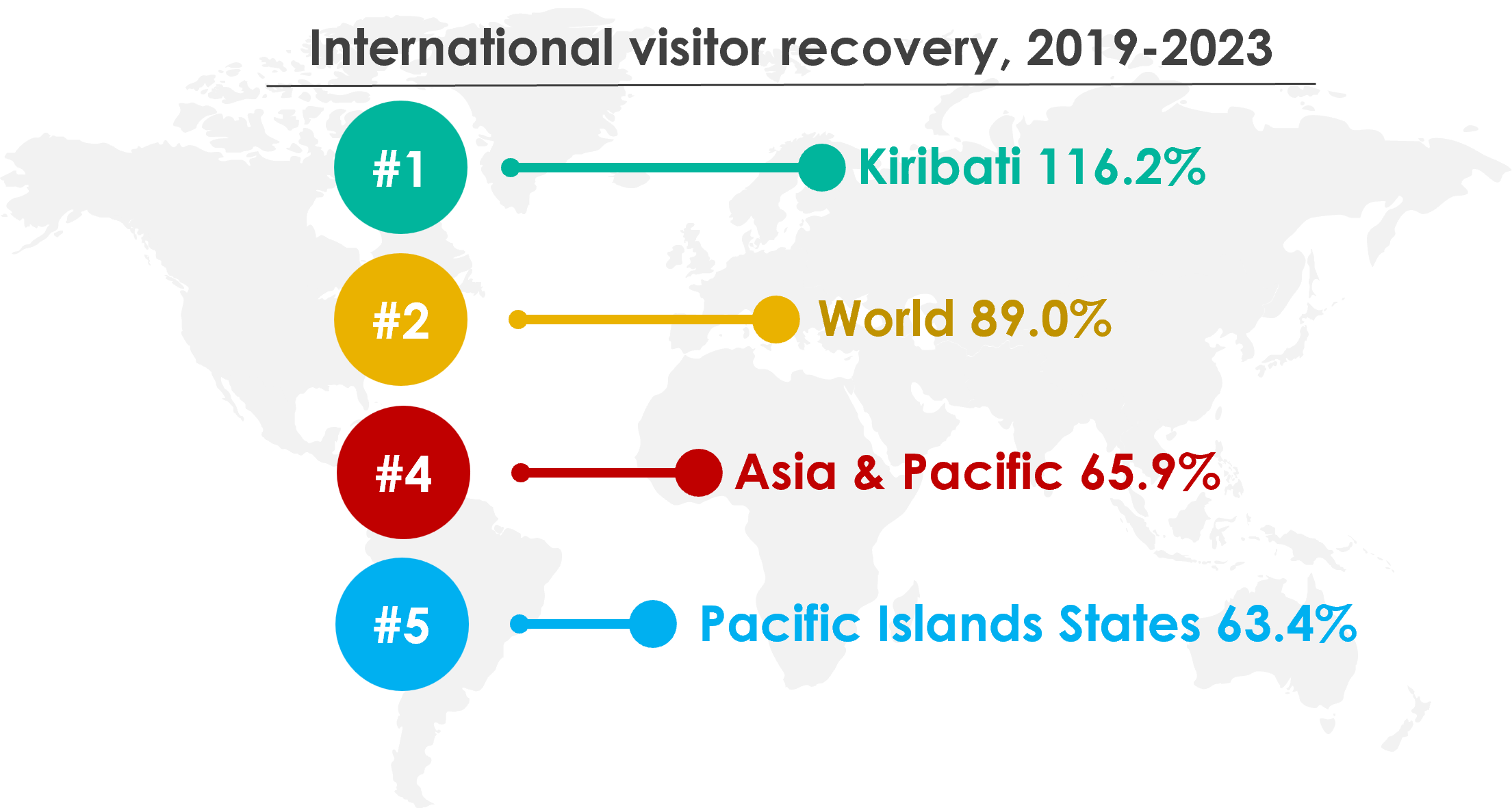
* Figures from 2019 are used, as the most recent available data at UNWTO for most of the Pacific States (2022) still reflects the impacts of COVID-19 lockdowns. - Note: International visitor recovery: 2023 values / 2019 values. - Source: UNWTO (www.unwto.org/tourism-statistics/key-tourism-statistics)
- Key source markets: The Pacific Islands are the leading source of international visitors to Kiribati, accounting for 31.4% of arrivals, followed by Australia (18.1%) and Europe (13.6%). Together, these three markets represent over 63% of total inbound travel.
- Pre-pandemic tourism revenue: Before the COVID-19 lockdown, Kiribati generated over US$3 million annually from international tourism, including travel and transport-related spending.
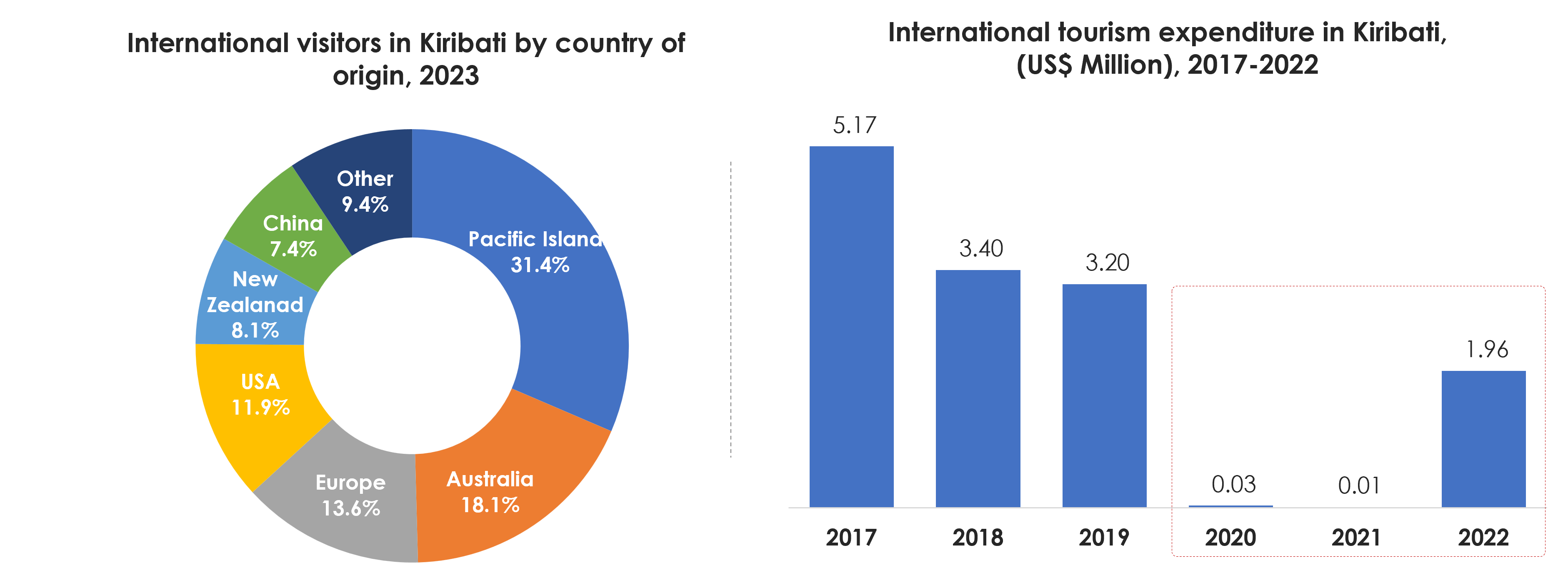
Note: Red box represent Covid 19 impact.
- Purpose of visit: Corporate travel leads as the main reason for visiting Kiribati, accounting for 44.7% of international arrivals, followed by Leisure (20.7%) and Transit (18.3%). Together, these top 3 purposes represent over 83% of total inbound travel.
- Length of stay: International visitors stay an average of 9.5 nights in Kiribati, reflecting strong engagement and extended travel patterns.
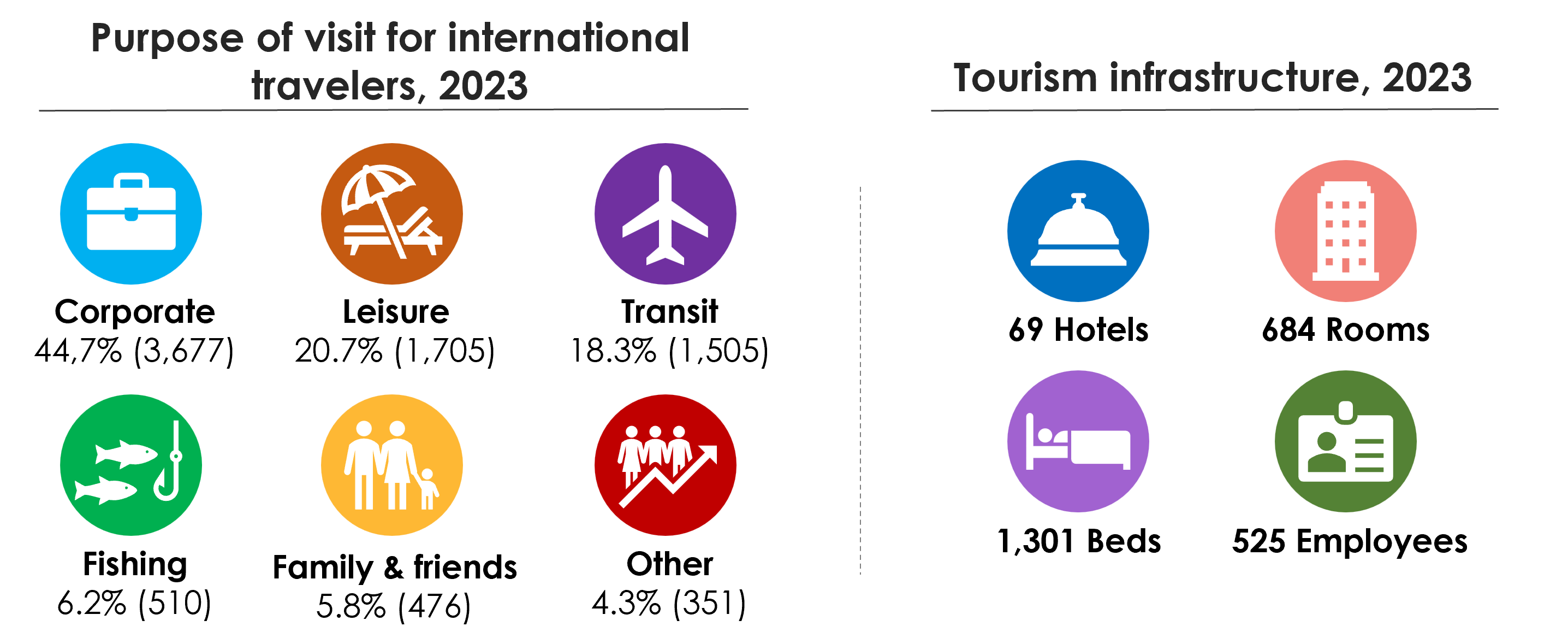
Source: Tourism Authority of Kiribati (www.corporate.visitkiribati.travel/resourcenter/research-statistics)
- Growing cruise tourism: In 2023, Kiribati welcomed 5,118 visitors* through 5 cruise ships operated by 4 international cruise lines, highlighting the country’s emerging appeal as a Pacific cruise destination.

Note: Same-day visitors (excursionists), not considered overnights visitors (international tourists-travelers). - Source: Tourism Authority of Kiribati